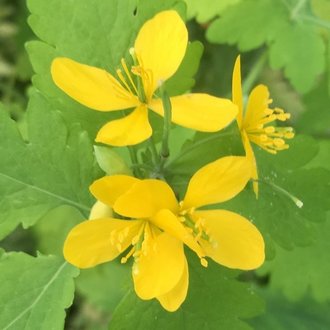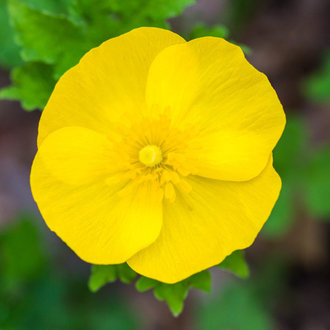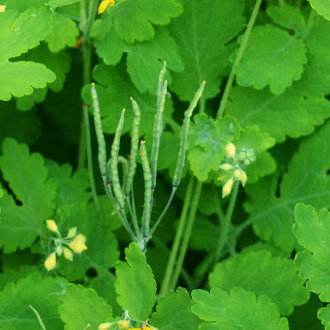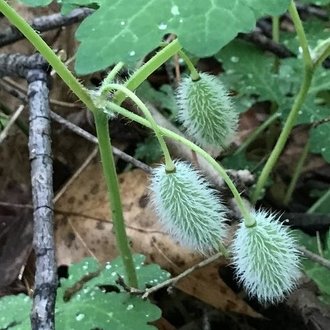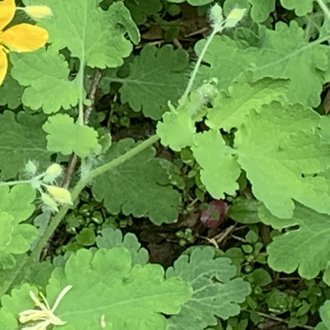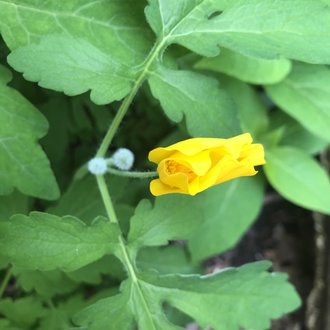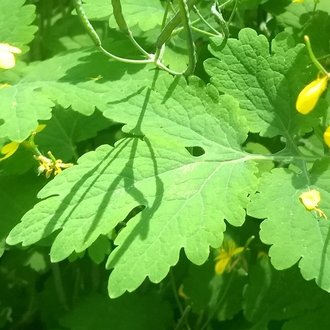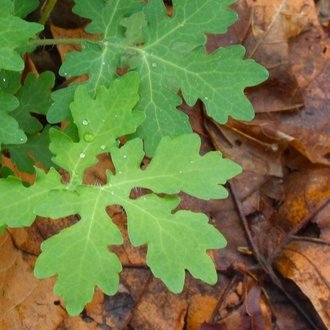Greater Celandine vs Celandine Poppy
These two plants, one native to North America and the other introduced and invasive in many regions, have superficially similar leaves and flowers. With effort, they can be told apart by leaves and flowers. They are easiest to distinguish by their seed pods or the arrangement of leaves along stems. Although their habitats overlap and both can occur together in the same habitat, Chelidonium is shorter-lived and more likely in sunnier, disturbed habitats whereas Stylophorum is longer-lived and more likely in shadier habitats, especially intact wild areas.
Greater Celandine (Chelidonium majus) | Celandine Poppy (Stylophorum diphyllum) |
A bienniel or short-lived perennial native to Europe and nearby, introduced in North America, where it is invasive in cooler, northern areas. | A woodland perennial native to the east-central U.S.; uncommon in its native range but planted in gardens and sometimes escaping into the wild. |
Petals narrower than long, often leaving space between them. Photo © Emily Rollinson, Public Domain. | Flowers larger. Petals wider than long, usually overlapping considerably. Photo © Melissa McMasters, CC BY 4.0. |
Seedpods long, narrow, and upright. Photo © hitefamily, CC BY 4.0. | Seedpods shorter and wider, rounded, dangling, and covered in bristles. Photo © Michael Ellis, CC BY 4.0. |
Leaves attached singly, alternate along stem. Photo © Ron Burkert, CC BY 4.0. | Leaves attached to stem in opposite pairs. Photo © andrew_garn, CC BY 4.0. |
Leaves have numerous fine cuts. Leaf margin strongly rounded between cuts. Photo © Akiva, CC BY-SA 4.0. | Leaves have fewer, but often deeper cuts. Between cuts, leaf margin tapers more gradually to a round tip. Photo © Fluff Berger, CC BY-SA 4.0. |
References & External Resources
These short lists show only links helpful for ID. For a complete list of references and resources also covering other aspects of ecology, visit the links section of the full article on each plant, which is the first entry here.



